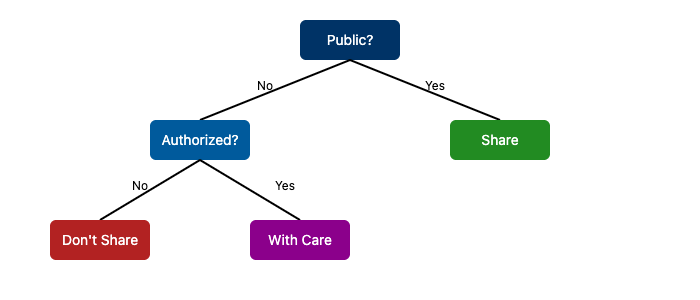As an executive assistant, you’re often trusted with information that isn’t meant for everyone’s eyes or ears. How you handle this responsibility can make all the difference in building trust with your executive and protecting your organization’s interests.
In this lesson, you’ll learn:
- How to recognize different types of information
- Communicate with care to protect your organization
- Set boundaries that reflect the highest standards of professionalism
Not all information is created equal. In your role, you’ll encounter proprietary, confidential, and public information.
-
Proprietary information is unique to your company and provides a competitive advantage. For example:
“The internal product roadmap and feature list are proprietary and should not be shared externally.” -
Confidential information is sensitive and should only be shared with authorized individuals. For instance:
“The terms of our vendor contract are confidential and not for external distribution.” -
Public information is already available to everyone, such as press releases or published reports. For example:
“Our recent press release about the partnership is public and can be shared with clients.”
If you’re ever unsure about how to classify information, it’s always best to check with your executive or legal team before sharing. When in doubt, err on the side of caution.
Discretion is about knowing what to say, what to withhold, and how to respond when you’re put on the spot. When a client asks about a project that’s still in development, avoid sharing specifics. Instead of, “We’re launching the new product in Q3 with features X, Y, and Z,” you might say, “We’re excited about upcoming developments and will share more details as soon as they’re finalized.” This approach keeps your communication professional and protects sensitive details.
Before sharing any information, ask yourself:
- Does this person need this information to do their job or make a decision?
- Is this information approved for external communication?
If the answer is no, you can set a clear but friendly boundary:
“At this stage, I’m not able to provide any updates, but I’ll ensure you’re informed if there’s news to share.”
This response maintains trust while protecting your executive and organization.
Even in casual conversations, keep your executive’s and company’s interests top of mind. Practicing this level of care ensures you never accidentally disclose something that could harm your organization. You can use the following decision tree to ask yourself if you should share the information:

Another way we can think about when to share information is to apply the STOP framework:
- S: Situation – What is being asked?
- T: Type – What type of information is this?
- O: Others – Who is requesting it? Do they have a need-to-know?
- P: Permission – Do I have permission to share?
This makes sure you pause before you provide any information and if it can be shared.

Here’s how this looks in action:
- Jessica: Hi Jake, the client just emailed asking if we can share the new product’s launch date and features. Should I send them the details from the meeting notes?
